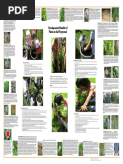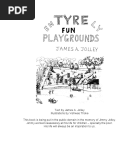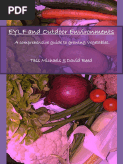Tuesday, 18 July 2017
Monday, 17 July 2017
Free resource material - Natural play, playspaces and gardening with children - Part 2
All materials are free to download and where it is a copy of someone else's creation I have given appropriate attribution

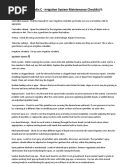 A comprehensive guide to the inspection and maintenance of playgrounds, playspaces and playscapes. The guide includes an all-inclusive inspection checklist as well as reporting proforma for incidents/accidents and any other events that may compromise the safety of your environment. Contemporary research addresses common misconceptions and misinformation about safety practices and procedures, giving you greater choice and peace of mind.
A comprehensive guide to the inspection and maintenance of playgrounds, playspaces and playscapes. The guide includes an all-inclusive inspection checklist as well as reporting proforma for incidents/accidents and any other events that may compromise the safety of your environment. Contemporary research addresses common misconceptions and misinformation about safety practices and procedures, giving you greater choice and peace of mind.
To be used in conjunction with Garden Maintenance for Playspaces
This book is being put in the public domain in the memory of Jimmy Jolley. Jimmy worked ceaselessly all his life for children – specially the poor. His life will always be an inspiration to us.

Playground Maintenance for Playspaces
 A comprehensive guide to the inspection and maintenance of playgrounds, playspaces and playscapes. The guide includes an all-inclusive inspection checklist as well as reporting proforma for incidents/accidents and any other events that may compromise the safety of your environment. Contemporary research addresses common misconceptions and misinformation about safety practices and procedures, giving you greater choice and peace of mind.
A comprehensive guide to the inspection and maintenance of playgrounds, playspaces and playscapes. The guide includes an all-inclusive inspection checklist as well as reporting proforma for incidents/accidents and any other events that may compromise the safety of your environment. Contemporary research addresses common misconceptions and misinformation about safety practices and procedures, giving you greater choice and peace of mind.Irrigation System Maintenance Checklist
To be used in conjunction with Garden Maintenance for Playspaces
To be used in conjunction with Garden Maintenance for Playspaces
To be used in conjunction with Garden Maintenance for Playspaces
Sunday, 16 July 2017
Free resource material - Natural play, playspaces and gardening with children
I was reviewing some of the natural play resources that I have on my blog page and have mean't to do a post sharing the links for a while. All materials are free to download and where it is a copy of someone else's creation I have given appropriate attribution. With the Powerpoint presentations I only ask you do likewise if utilizing them in a group teaching or training sessions. I will post one a day when I have the time.
Ebooks
A Comprehensive Guide to Growing Vegetables.
Resources to be used in conjunction with - A comprehensive guide to growing vegetables.
Plant Labels - Coloured
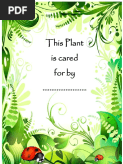 The labels can be printed A4 page or 4 per page (see your printer setup) and are used in conjunction with Plant adoption certificates to encouraged children in naturalistic childcare environments to bond and care for plants. Obviously labels may need to be laminated or otherwise waterproofed when placed outside. Uncoloured labels can be coloured and cut by the children before laminating/ waterproofing
The labels can be printed A4 page or 4 per page (see your printer setup) and are used in conjunction with Plant adoption certificates to encouraged children in naturalistic childcare environments to bond and care for plants. Obviously labels may need to be laminated or otherwise waterproofed when placed outside. Uncoloured labels can be coloured and cut by the children before laminating/ waterproofingPlant Certificates

 Plant adoption Certificate I - used to encouraged children in naturalistic childcare environments to bond and care for plants.
Plant adoption Certificate I - used to encouraged children in naturalistic childcare environments to bond and care for plants.Plant adoption Certificate II - used to encouraged children in naturalistic childcare environments to bond and care for plants.
Plant adoption Certificate III - used to encouraged children in naturalistic childcare environments to bond and care for plants.
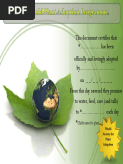
Plant adoption Certificate IV - used to encouraged children in naturalistic childcare environments to bond and care for plants.
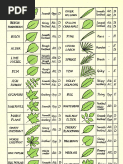
Additional material
Leaf identification chart

Different Mulches

Optimal Soil Ph for Vegetables

Companion Plantings
Saturday, 1 July 2017
Salzburg Global Seminar - Topics
Salzburg Global Seminar - Topics
The full article can be read through the hyperlink above
During a five-day program held in March, 52 experts in urban planning, childhood development, conservation, environmental policy, and health considered how green spaces could better meet the needs, and be accessible for, children.
The Salzburg Statement on The Child in the City: Health, Parks and Play recommends several policies, practices and investments. It also contains eight actions which can transform cities for children.
The full article can be read through the hyperlink above
During a five-day program held in March, 52 experts in urban planning, childhood development, conservation, environmental policy, and health considered how green spaces could better meet the needs, and be accessible for, children.
The Salzburg Statement on The Child in the City: Health, Parks and Play recommends several policies, practices and investments. It also contains eight actions which can transform cities for children.
These eight actions are:
- Ensure children of all ages, backgrounds, income, and abilities have equitable access to nature and play regularly and in meaningful ways to promote good health and wellbeing.
- Embed nature in everyday places used by children, such as schools, backyards, parks, playgrounds and city streets, to make the city into a natural outdoor classroom.
- Involve children in designing and planning natural spaces for recreation, education, inspiration and health, to give them ownership and pride in their local communities, schools and parks
- Build curiosity, wonder, and care for nature in children (for example by greening school grounds and involving children with community gardens).
- Protect natural features across cityscapes and create an equitably distributed network of accessible green and nature-rich spaces that all generations can reach on foot.
- Connect cities with the broader ecosystems in which they are embedded, creating corridors for people, plants and animals to move safely across the city and into its surroundings.
- Establish more urban conservation areas to increase access to nature and connect cities to the broader protected area network
- Work together through cross sectoral and multi-level partnerships to build an inclusive culture of health in cities.
Subscribe to:
Posts (Atom)


